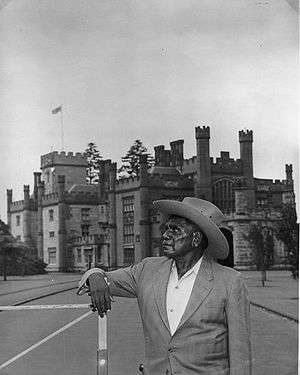Aranda people


The Aranda /ərʌndə/ people, sometimes referred to as the Arrernte, Arunta, or Arrarnta are an Aboriginal Australian people who live in the Arrernte lands, at Mparntwe (Alice Springs) and surrounding areas of the Central Australia region of the Northern Territory. Some Aranda live in other areas far from their homeland, including the major Australian cities and overseas.
Aranda mythology and spirituality focuses on the landscape and the Dreamtime. Altjira is the creator being of the Inapertwa that became all living creatures. Tjurunga are objects of religious significance.
The Arrernte Council is the representative and administrative body for the Aranda Lands and is part of the Central Land Council.
Tourism is important to the economy of Alice Springs and surrounding communities, The Aranda way of life is presented through tour guides and storytellers speaking of the life, their artwork, their culture and language in a variety of different ways. Tours are run regularly to Hermannsburg and Wallace Rockhole, both of which are (Western) Aranda,[1] so as to learn more about the Aranda way of life, from their artwork to their culture and language.
Sub-divisions
The name Aranda refers to the following distinct groups (or "mobs"):
- Central Aranda, from the township of Alice Springs only.
- Eastern Aranda, from the Aranda lands east of Alice Springs.
- Western Aranda, from the Aranda lands west of Alice Springs, out to Mutitjulu and King's Canyon.
However, an alternative, narrower use of the word Aranda refers only to people from the lands north of Alice Springs.
Dialects/languages in the Arrernte group
The ancestors of the Aranda all spoke one or more of the Arrernte group of languages/dialects (see below). "Aranda" is a simplified, Australian English approximation of the traditional pronunciation of the name of Arrernte [ˈarəɳ͡ɖa ].[2]
Aranda people speak the following Arrernte dialects/languages:
- Alyawarr
- Anmatjirra
- Antekerrepenhe
- Ayerrerenge
- Eastern Aranda or Ikngerripenhe
- Central Aranda or Mparntwe Arrernte
- Lower Aranda or Alenjerntarpe originates from the Finke River area
The Aranda had a highly developed sign language.
- Southern Aranda or Pertame
- Western Aranda, Tyuretye Arrernte or Arrernte Alturlerenj
See also
- Spirituality & mythology
References
- ↑ Aboriginal Australia Art & Culture Centre. "Aboriginal Art Culture and Tourism Australia". Aboriginalart.com.au. Retrieved 2013-03-23.
- ↑ Myfany Turpin (2004), "Have you ever wondered why Arrernte is spelt the way it is?" Archived May 6, 2010, at the Wayback Machine. (originally published by the Central Land Council. (Access: 4 March 2013).
External links
| Wikimedia Commons has media related to Arrernte people. |
- Arrernte Tribal Group
- Arrernte Native Title
- Arrernte people at ANTS
- Central Land Council
- Bibliographies of published, rare or special materials on Arrernte language and people, at the Australian Institute of Aboriginal and Torres Strait Islander Studies